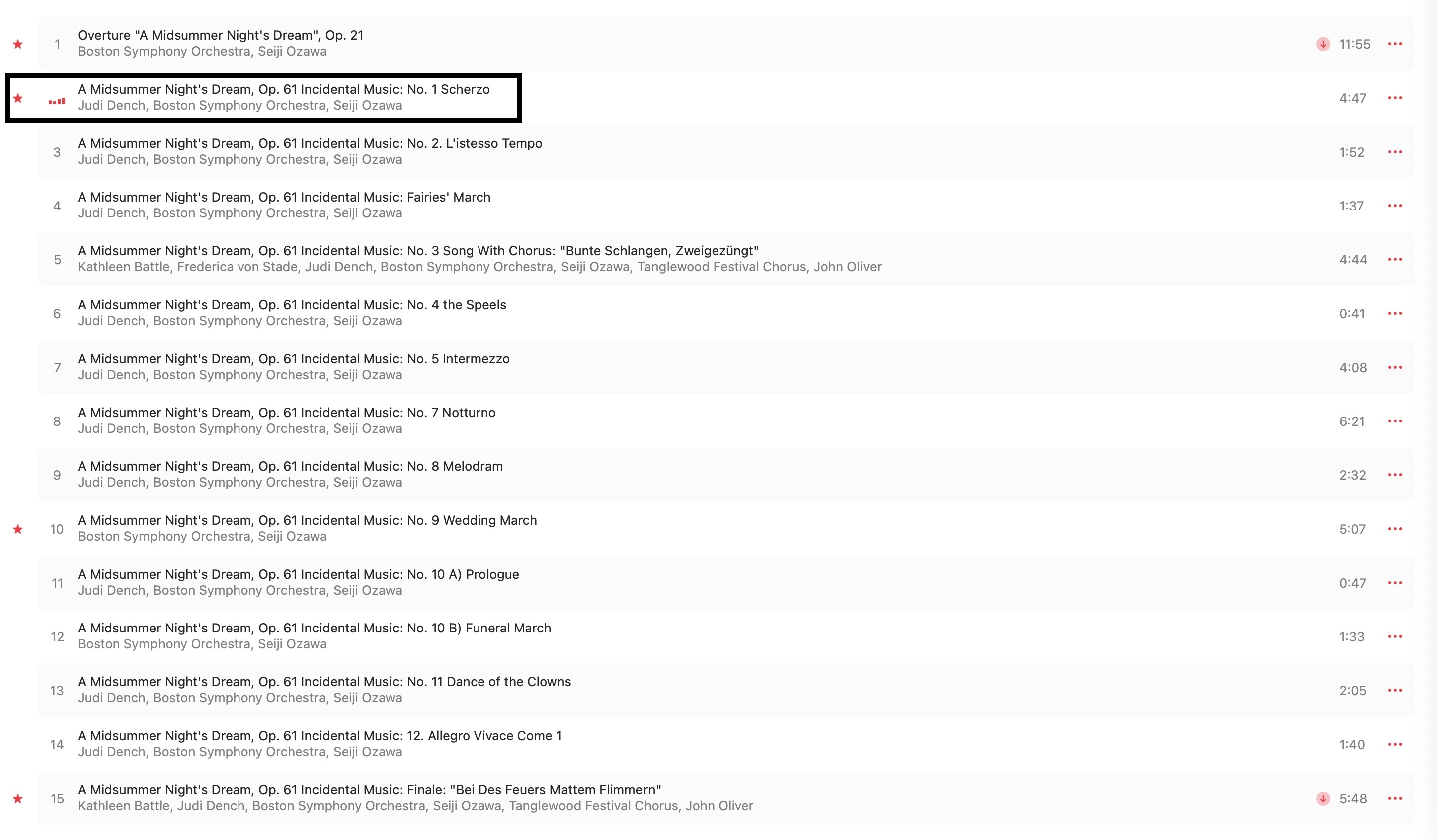I’ve blogged about Mendelssohn’s Scherzo from a A Midsummer Night’s Dream previously (two interesting Mendelssohn paraphrases—Rachmaninoff’s genius piano transciption of Mendelssohn’s incidental music). But today let’s talk about the piece itself, in its most authentic orchestral form.
Mendelssohn is a big fan of Shakespeare and particular the Midsummer play.
The composer’s sister Fanny explained it this way. “From our youth on we were entwined in A Midsummer Night’s Dream, and Felix [Mendelssohn] particularly made it his own. He identified with all the characters. He re-created them, so to speak, every one of those whom Shakespeare produced in the immensity of his genius.”
Mendelssohn composed the Overture [Op. 21] to A Midsummer Night’s Dream when he was just 17 years old. Later, at the age of 33, the King of Prussia commissioned him to write the full incidental music (Op. 61).

The Scherzo from the incidental music is the first piece in the collection.
Mendelssohn’s A Midsummer Night’s Dream is, in many ways, the epitome of fairy music. It’s not just about stacking flute, harp, and airy violin pizzicatos to create a dreamy atmosphere. While Dvořák’s Rusalka (see a previous blog), the ‘Apparition de Myrthe et évocation magique’ from Act II of Giselle, and Debussy’s Clair de Lune are all dreamy in their own right, Mendelssohn’s take stands out for the composer’s eh, personal background.
Mendelssohn came from an aristocratic household, and his music reflects that sophistication. As Shakepeare’s A Midsummer Night’s Dream tells the tale of the whimsical, tangled love lives of gods and aristocrats in an enchanted forest—and Mendelssohn captures that with a unique blend of formal elegance and magical midsummer madness.
What makes this work particularly interesting is how it straddles the line between formal and fantastical. While much of the music may sound structured—such as the Fairie’s March featuring queen Titania or the wedding march—there’s always a sense of something hidden beneath the surface. The music hints at a magic that isn’t immediately visible. Love looks not with the eyes but with the mind—listen carefully and you’ll sense the pixie dusts.
The Scherzo is one of my favorite pieces, particularly for its brilliant layering. It maintains a Mazurka-like 3/4 rhythm throughout. But somehow, the piece sheds the earthy nature of Mazurka dance and transforms into something light and elegant—like magic flowing in the enchanted forest. The melody is carried by the bouncy flutes, clarinets, and pizzicatos and shifts between instruments, and the momentum never falters. Take a moment to listen and watch the stunning arrangements in the following piece: